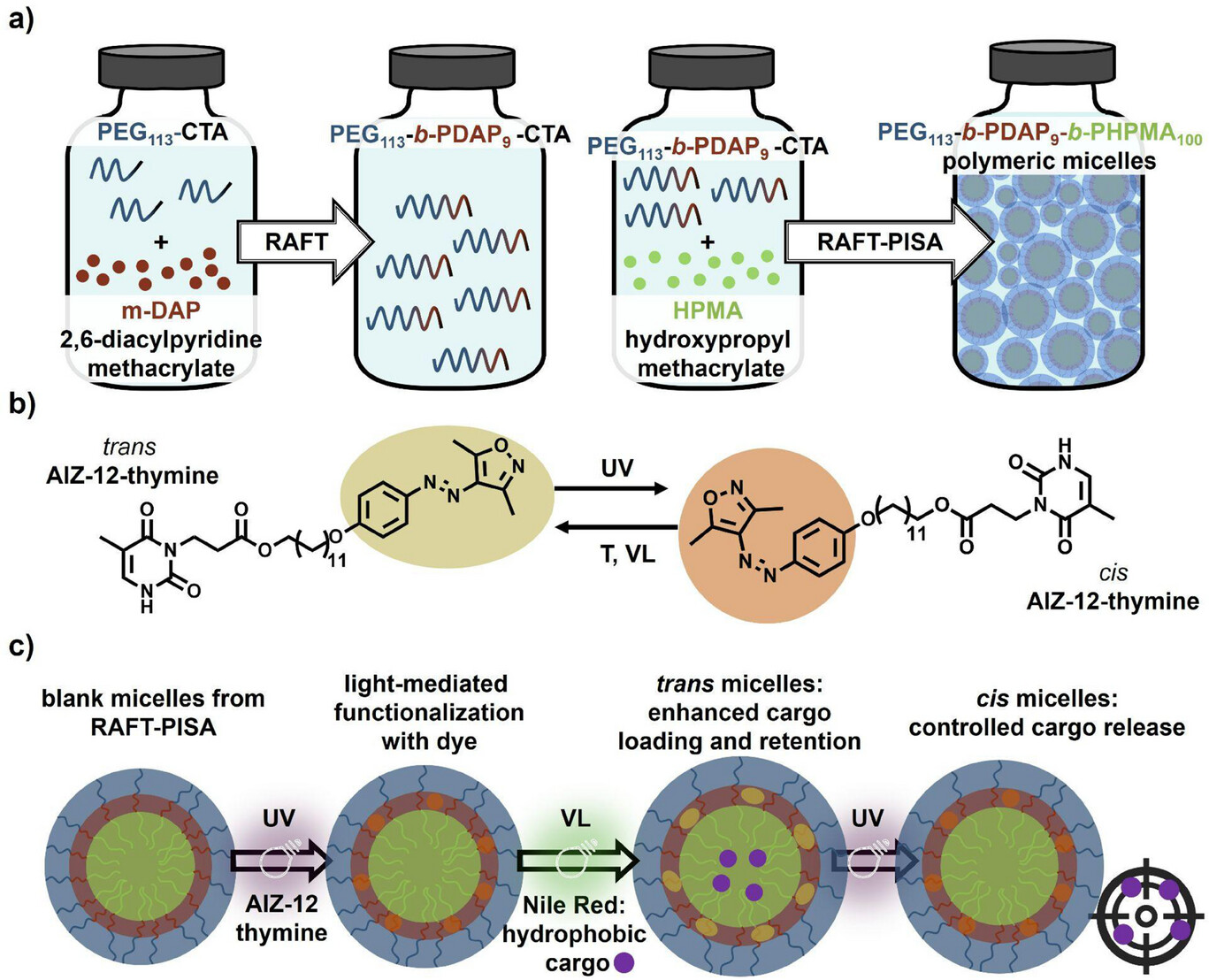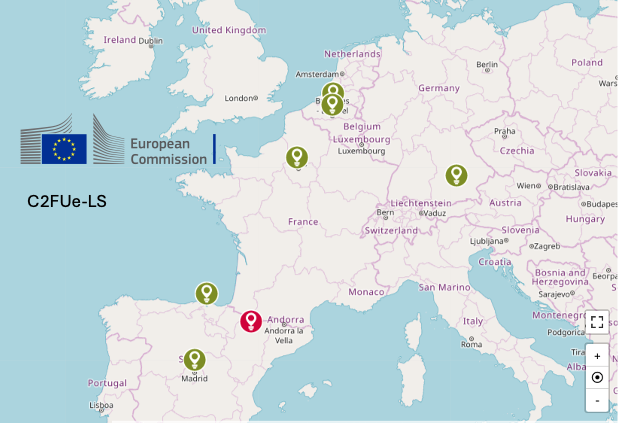Researchers from the Liquid Crystals and Polymers group at INMA, in collaboration with the University of Florence, have published a new joint study in the prestigious journal Small, an international reference in nanoscience and nanotechnology.
This newly published contribution presents the development of light-responsive polymeric nanocarriers capable of releasing their cargo in a controlled manner upon irradiation. The study aims to contribute to the development of highly precise drug delivery systems, in which light acts as an external and non-invasive stimulus.
The work reports the results obtained by Ruggero Rossi during his predoctoral stay at INMA, which are part of his doctoral thesis defended at the University of Florence, and further strengthens the strong collaboration between the two research groups.
“Light-mediated supramolecular functionalization of polymerization-induced self-assembled micelles”
Ruggero Rossi, Miriam Abad, Luis Oriol, Daniele Martella, Camilla Parmeggiani, Milagros Piñol
Small 2025, e11176
6th Nov. 2025
Abstract: Precise, remote control of polymeric nanoparticles via external stimuli is a key aim for the next-generation drug delivery. As a versatile, one-pot method, polymerization-induced self-assembly (PISA) produces dispersions of block-copolymer micelles at high solids content with tunable core–corona architectures. Light is an ideal trigger to control the uptake and delivery of specific molecules inside such micelles since it can be localized, and easily tuned in intensity and wavelength. In this study, PISA is employed in water to obtain micelles containing diacylaminopyridine units functionalizable thanks to supramolecular interaction by a light-mediated process. Indeed, only if UV irradiation is used to convert thymine-based azo photoswitches into the cis form, these molecules permeate the hydrophilic corona and anchor via hydrogen bonds to the hydrophobic core of the micelles. Subsequent visible‑light exposure regenerates their trans state without micelle disassembling. The photoswitch loading boosts the encapsulation of Nile Red, studied here as a model of hydrophobic cargo, while a subsequent UV light stimulus accelerates the dye release; moreover, the selected photoswitch sustains release over days without further irradiation. By marrying advanced polymerization techniques with reversible photochemistry, dynamic micelles are prepared whose structure and cargo release can be fully controlled by light.










